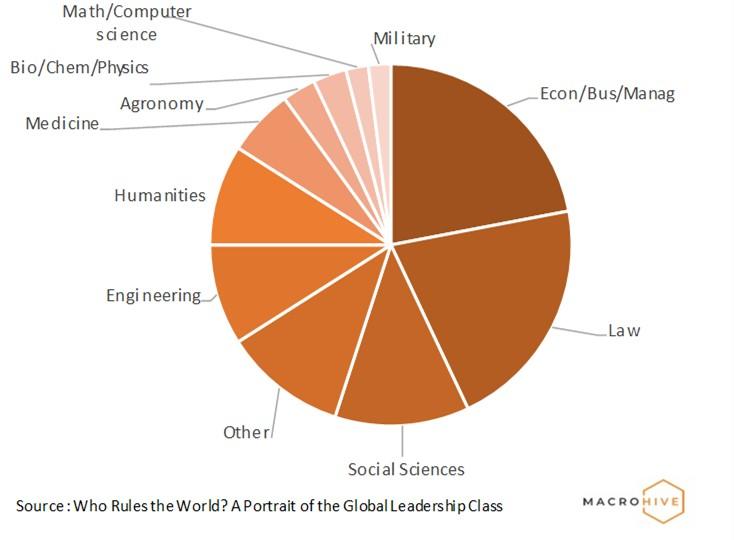Who Rules The World?
Authored by Bilal Hafeez via MacroHive.com,
Elites. They’re all over the news these days. But who are they and what do we know about them? An excellent new study, Who Rules the World? A Portrait of the Global Leadership Class, takes a systematic approach to answer these questions. At its heart lies a new database, the Global Leadership Project (GLP), which covers 145 nation-states and 38,085 ‘leaders’, each of whom is given biographical information. In total, the database has approximately 1.1 million data points. Academics at several leading institutions, John Gerring, Erzen Oncel, the late Kevin Morrison, and Daniel Pemstein, then sliced and diced this data to arrive at a compelling picture of today’s leadership elite.
Who Are Counted As The Global Elite?
They look at the country’s top political leader, the political executives, cabinet ministers, executive staff, party leaders, assembly leaders, supreme court justices, and members of parliaments. They also include unelected leaders such as monarchs, religious leaders, military leaders, junta leaders, CEOs of important companies, and NGO leaders.
So What Does the Typical Member of the Elite Look Like?
Male (81% of the total), married (91%), and on average 55 years old. They speak roughly two languages, with over one third speaking English. They are normally university educated with almost half educated in the West. Their most common degrees were in Economics/Business/Management or Law. The majority had white collar jobs or political backgrounds before entering the leadership elite. Typically, they earn thirteen times more than national average.
Chart 1: Education of Political Elites
What About the Leader at the Top?
The top political leaders tended to be older (on average 61), and more of them were male (92%) and could speak English (59%). They tend to be educated abroad, rather than domestically. Also, they are likely to have studied Economics/Business/Management (35%) more than any other subject (next is law at 17%). They are as likely to have political backgrounds as white collar backgrounds.
Regional Variations
The variation of gender, marital status, and age was relatively small across regions. Marginally, Europe tended to be more balanced, and the Middle East and North Africa (MENA) were least balanced. The elite in the Americas and MENA tended to speak the least amount of languages. But the elite in MENA was most educated, while in Africa, they were the least – the variation was small though. The least white collar leaders were in Africa, while the most white collar leaders were in the Americas. Finally, the earnings of the elite in rich countries were only three times the national average while in poor countries it was seventeen. Africa stands out as the region with the highest earning elites – leaders there earn thirty-five times the national average.
Other Observations
After English, French, Spanish, and Arabic were the next most commonly spoken languages. More of the elite have occupational backgrounds in the education sector rather than media or military. The most common political experience of the elite is to work within political parties. Only 7% have no political experience.
Final Words
This new database and study is an important step to understanding the profile of the global elite. It highlights the dominance of men of a certain age often with an economics background. The real question is whether populist events of recent years, which the database doesn’t cover, have changed this picture or not. Time will tell.
https://ift.tt/37H11VY
from ZeroHedge News https://ift.tt/37H11VY
via IFTTT





0 comments
Post a Comment